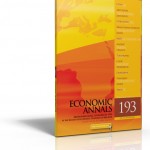INVESTOR RELATIONS ON THE INTERNET: ANALYSIS OF COMPANIES ON THE SERBIAN STOCK MARKET
##plugins.themes.bootstrap3.article.main##
##plugins.themes.bootstrap3.article.sidebar##
Bojan Đorđević
Mira Đorđević
Dragiša Stanujkić
Mira Đorđević
Dragiša Stanujkić
Abstract
Stockholders and other interested parties used to exchange information in writing by means of physical submission, while today with just a click on any known company’s Internet page it is possible to acquire both the information needed and its financial situation. The aim of this work is to indicate the lack of corporate culture and investor communication on the Serbian stock market by analysing investor relations via the e-communication tools of some of the best Serbian companies. This study investigates investor relations on the Internet of companies listed on the Belgrade Stock Exchange (BELEX 15 and BELEX LINE). For this purpose, the websites of the 20 largest listed companies of the Republic of Serbia were screened for investor relations items. Results obtained by using a three-stage model show that most companies in Serbia are at the second stage of internet investor relations, i.e., where information available through other sources is combined to better inform investors. In the third stage companies use the full interactive possibilities of the Internet for investor relations purposes. The author also stresses that the quality of investor relations must be a part of every company’s strategic vision.
##plugins.themes.bootstrap3.article.details##
Keywords
investor relations, communications, Internet, stakeholders, stock market, disclosure
JEL Classification
G32, M41
Issue
Section
Articles
How to Cite
Đorđević, B., Đorđević, M., & Stanujkić, D. (2012). INVESTOR RELATIONS ON THE INTERNET: ANALYSIS OF COMPANIES ON THE SERBIAN STOCK MARKET. Economic Annals, 57(193), 113-136. https://doi.org/10.2298/EKA1293113D
How to Cite
Đorđević, B., Đorđević, M., & Stanujkić, D. (2012). INVESTOR RELATIONS ON THE INTERNET: ANALYSIS OF COMPANIES ON THE SERBIAN STOCK MARKET. Economic Annals, 57(193), 113-136. https://doi.org/10.2298/EKA1293113D

